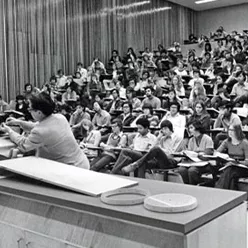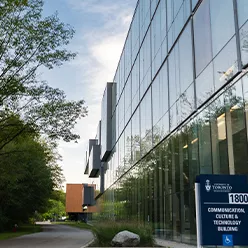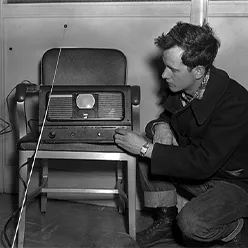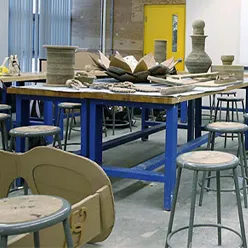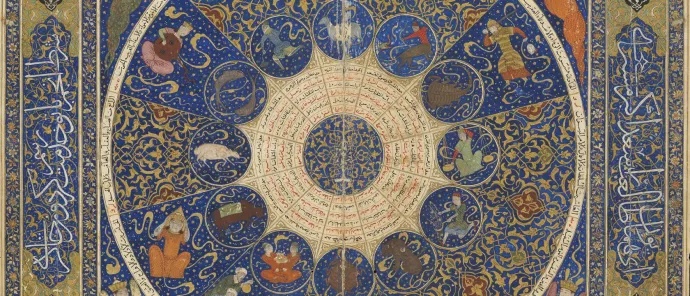
Interested in Visual Studies?
That’s not surprising! Every day we produce and evaluate imagery, whether it’s an Instagram post by a friend, a tweet about a politician, or an article in the mainstream media. Understanding how these visual forms create meaning and are perceived both at the time they are created and long after are critical for success in the twenty-first century. Why is visual imagery such a powerful mode of communication? How do we analyze and understand its varied forms, from the medieval churches of Christian Europe to the New Wave films of Taiwan, horoscopes painted in Central Asia, and the botanical imagery explored during Impressionism? The Department of Visual Studies incorporates a wide range of methods, theories, and media in order to examine the place of visuality in human experience. In fostering deep and critical engagement with visual evidence, programs in DVS help you develop expertise in visual literacy—how to read images—and related analytical skills, including critical reading, thinking, and writing.
Courses offered in the DVS examine the history, production and reception of a range of visual and aural works including photography, new media, popular culture and advertising; painting, sculpture, landscape, architecture, and the built environment; contemporary art, curatorial studies and museum culture; and time-based media, including film and television. Courses analyze many geographical and chronological settings, from ancient Rome to contemporary South Asia, and engage a variety of theoretical and methodological perspectives.
We know that our programs open doors into fields where skills in visual analysis, research based on free inquiry, and communication are required. In what profession are they NOT required in our image-saturated world? DVS graduates work in the arts, for sure—many teach studio art or are practicing artists, filmmakers, curators, and art historians. Others work in design studios, galleries, museums, advertising, commercial photography, and fashion. Many go into other fields where their analytical skills serve them well: public policy, library science, journalism.
Click here for DVS Alumni Profiles »
Click here to see Careers by Major, from UTM’s Career Centre »
DVS is home to five programs
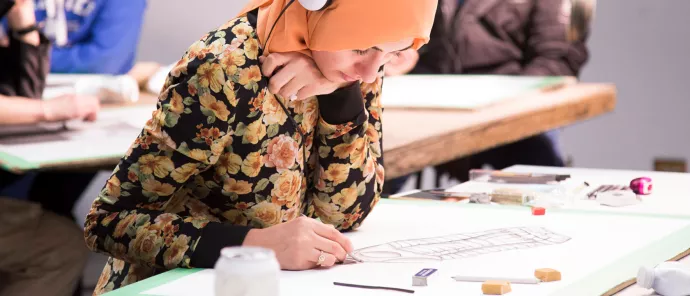
DVS is home to Art and Art History (Ontario’s first and most successful program offered jointly by a university and a college); Art History; Cinema Studies; Visual Culture and Communication (called a Standout Program in Maclean’s University Guidebook in 2019); and Visual Culture. Explore our programs »
Maclean’s University Guidebook (2019) named Visual Culture and Communication one of three Standout Programs at the U of T.
Our programs of study vary from highly concentrated Specialists to more general Majors and Minors. That means that students can curate their own Bachelor’s degree by combining programs within DVS or outside of it, in different departments (e.g., Major in Cinema Studies, Major in English & Drama; Major in Art History, Minor in History, Minor in Biology; Specialist in Art & Art History, Minor in Anthropology).
Click here for Considering a Minor? »
High-level studies frequently debunk urban legends about arts degrees, but you’ve probably heard the stories. What’s important to know is that Humanities graduates sometimes take slightly longer to land their first “real job,” but not a lot longer; 86% are employed within six months of graduation. Although a few months can seem like an eternity when you’re looking for work, the good news is that once you have a job, statistics indicate that you’ll get promoted faster than your non-arts co-workers. That’s because visual acuity, social skills, and research experiences based on free inquiry—all developed in small classes, discussions, and presentations—help make people creative problem-solvers and effective leaders.
Click here to read a Forbes magazine article about arts education and professional success (opens in a new window) »
Click here to read an article from Maclean’s on The True Value of an Arts Degree (opens in a new window)»
DVS is one of the smallest departments at UTM, with many smaller classes and opportunities to converse and work with award-winning professors whose research spans the globe. Dedicated faculty and staff members create many extracurricular opportunities for DVS students, including workshops focused on career and academic skills, work-study positions, talks by artists and filmmakers-in- residence, and peer and professional counselling. Art & Art History faculty at Sheridan also sponsor many events that similarly create critical spaces for student engagement and networking.
Click Current Students for information about directed reading courses, internships, and other opportunities for hands-on research »

